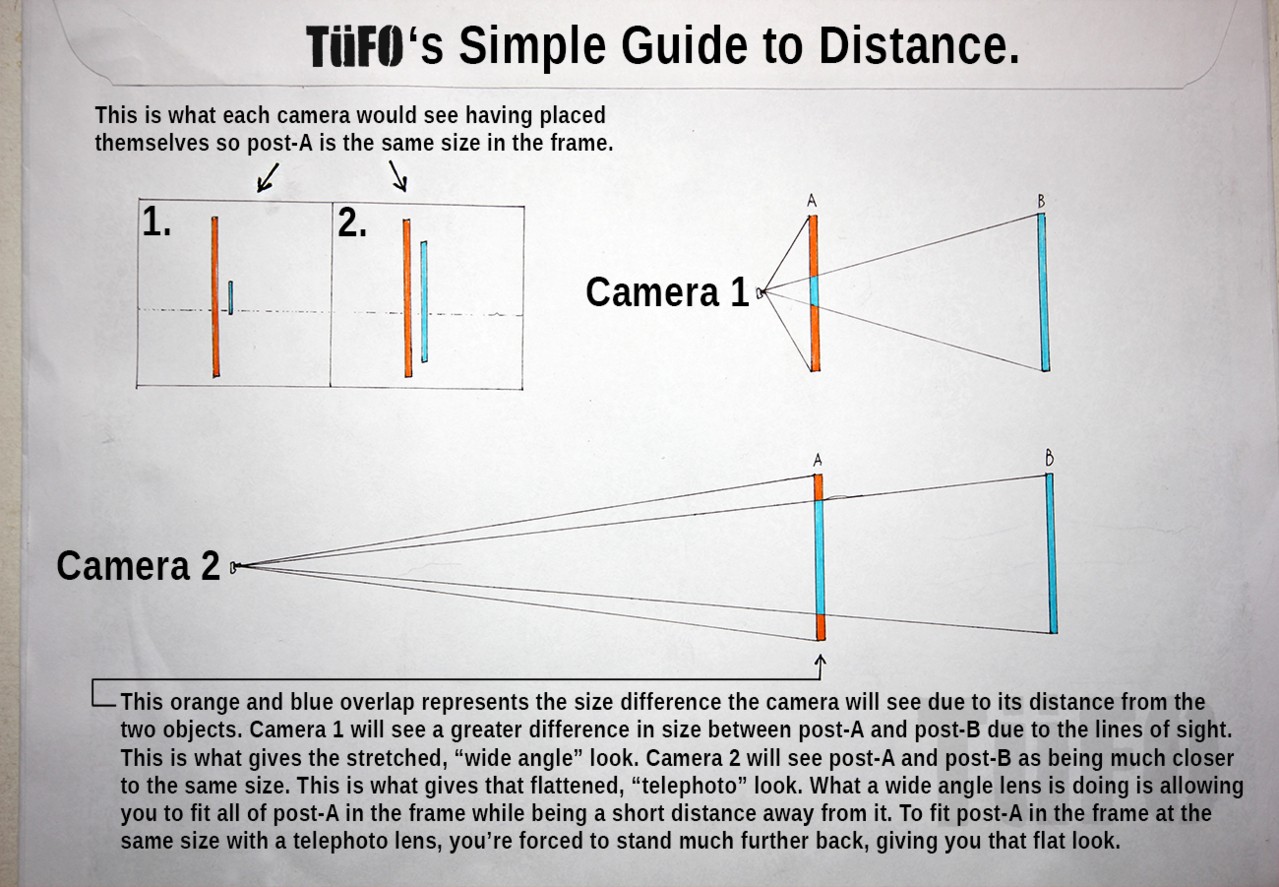It is very common for people to confuse perspective, which is based only on camera-to-subject distance, and mix it up with apparent perspective distortion. That is itself, a term: apparent perspective distortion, which is what didereaux's post is dealing with.
Two different terms. The ONLY WAY to alter perspective is by changing the camera-to-subject distance. Distance, distance, distance!!!!!!!!
Apparent perspective distortion is another term. Often confused with perspective.
There are so many on-line and printed sources these days, and a large percentage of them are flat out using the term perspective in an improper, half-assed way. Perspective is an old term that has come to be widely misunderstood, even by people who know a lot about photography in a practical sense. As fellow TPF member Ysarex has mentioned, there are many myths and half-truths and inaccuracies that are perpetuated every day, on-line, and in books.
Correct use of actual terms that have been around for hundreds of years versus how to actually shoot images that have different feeling to them is the subject of this post, and we have seen this converaation pop up here every six months or so for literally the last seven years!
Be that as it may, I though big D's post was a pretty good demonstration of what was once commonly called lenswork, a term that has sort of fallen out of common use. Petty good example photos, really, wonderful comparison between the size of the locomotive engineer in the tele shot as opposed to the wide-angle shot!




![[No title]](/data/xfmg/thumbnail/33/33031-909b1e1ff8739eef165c60b70c9a6a38.jpg?1734163051)




![[No title]](/data/xfmg/thumbnail/34/34121-bdee2cb53518626b080a38730454dd5b.jpg?1734164601)



